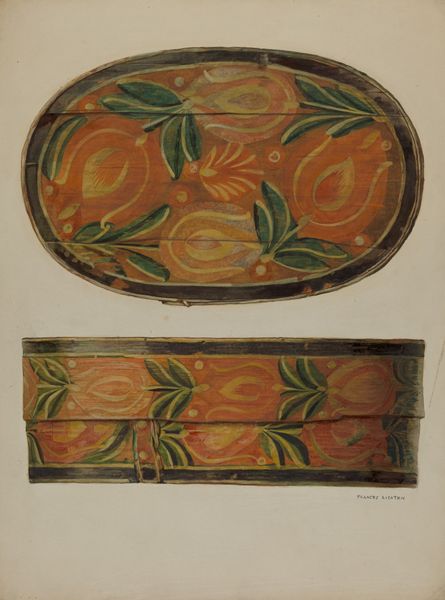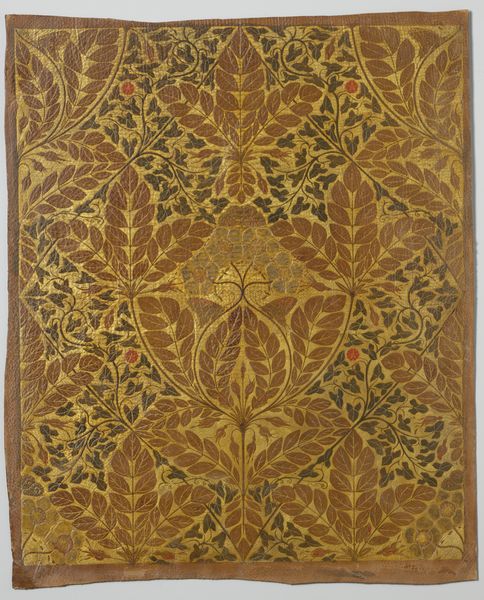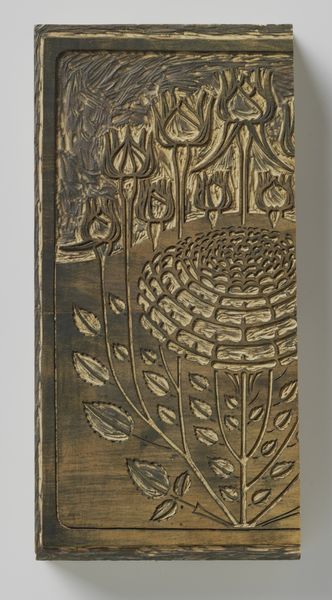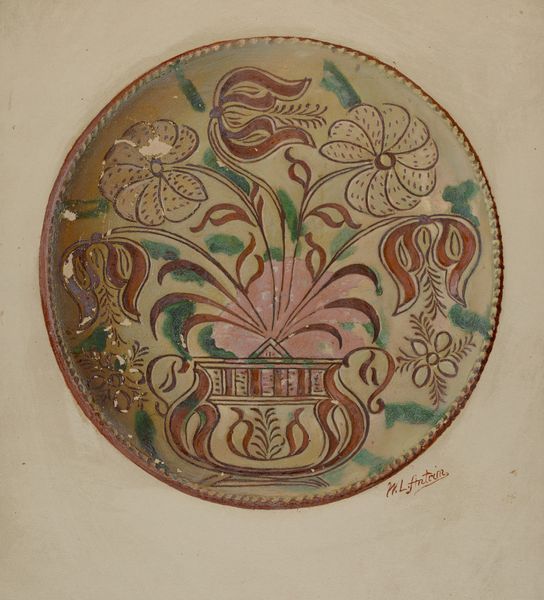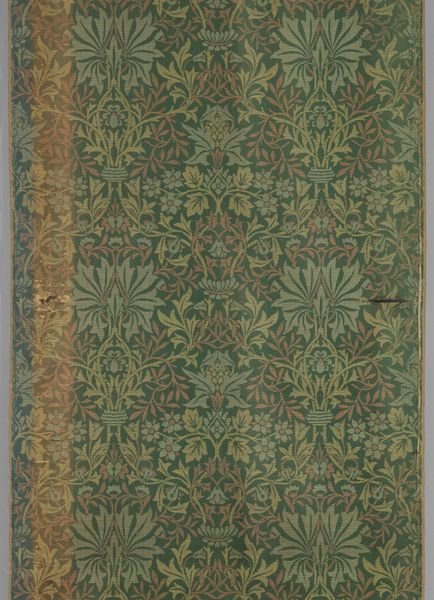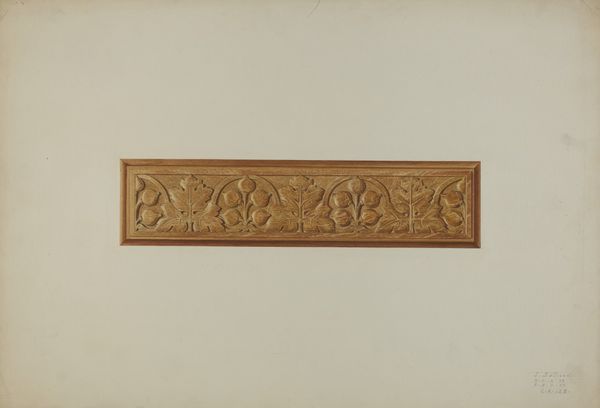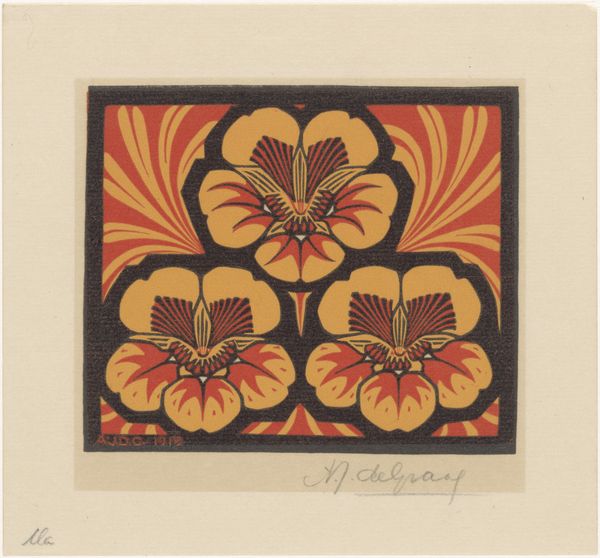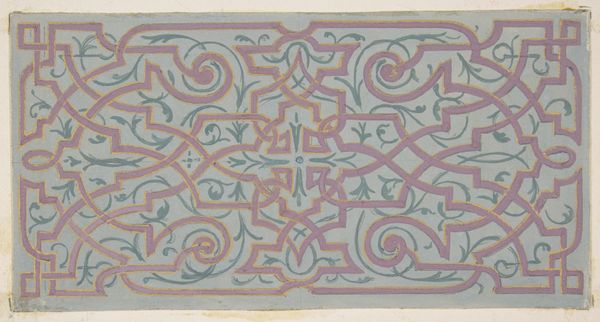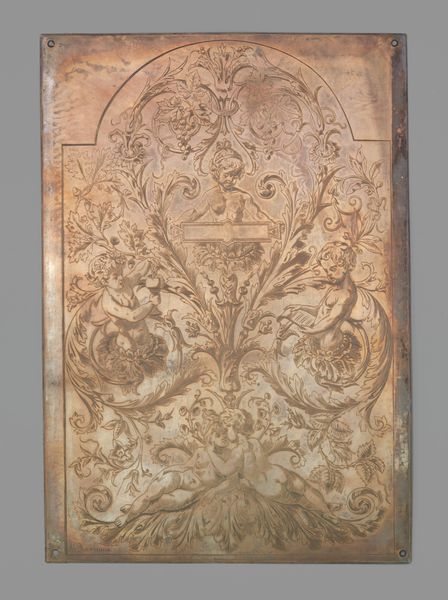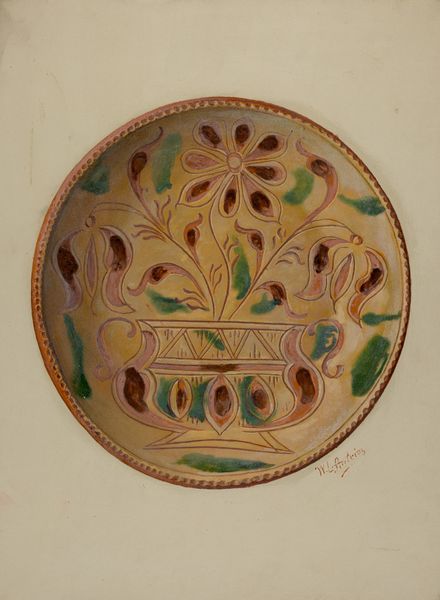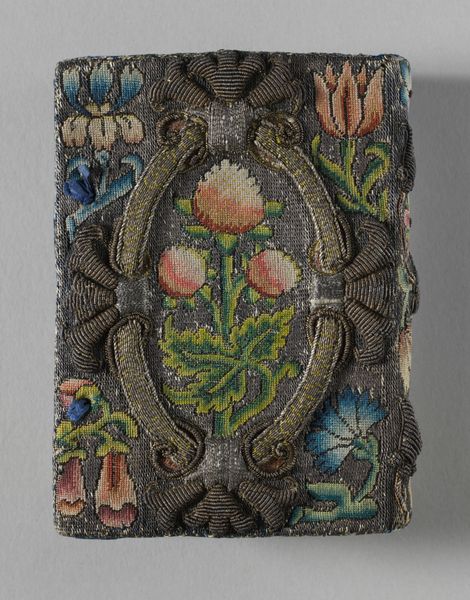
carving, relief, wood
#
wood texture
#
naturalistic pattern
#
organic
#
carving
#
pottery
#
relief
#
organic pattern
#
wooden texture
#
wood
#
watercolor
Dimensions: height 91 mm, width 110 mm
Copyright: Rijks Museum: Open Domain
Editor: So, here we have "Three Flowers" by Julie de Graag, made around 1919. It’s a wood carving, seemingly with watercolor accents, and it's held at the Rijksmuseum. I’m really drawn to how tactile it feels, you know? Like you could almost feel the texture of the wood. What stands out to you when you look at this? Curator: For me, it’s about process. De Graag chose wood, a material that inherently connects us to the natural world and manual labor. Considering this was 1919, do you think this embrace of “craft” might be a deliberate rejection of industrial modes of production ascendant at that time? Editor: That's a really interesting angle! I hadn’t considered it as a potential commentary on industrialization, more like an appreciation for simpler forms and designs. Curator: But "simpler" for whom? Think about the labor involved in carving something like this. How does the very physicality of this work speak to you in contrast to something mass-produced? The watercolor details soften the wood and maybe comment on the feminized applied arts as a distinct, lower cultural category? Editor: I see what you're saying. It bridges fine art with craft, maybe challenging those strict categories. The choice of a domestic, decorative motif like flowers underscores that connection, too. The art itself is born of manual and artisanal process rather than industrial production. Curator: Exactly! Consider the social context: the early 20th century saw growing debates about art's role in society, and about blurring the lines between utilitarian objects and high art. How do you see De Graag engaging with that discussion through her material and method? Editor: Well, framing it this way, I see it as actively participating in that discussion. I thought it was a nice-looking carving before but now the choice of material feels much more intentional and almost a subtle political statement! Curator: It is. Hopefully thinking about it materially encourages that dialogue to keep happening today, too!
Comments
No comments
Be the first to comment and join the conversation on the ultimate creative platform.
